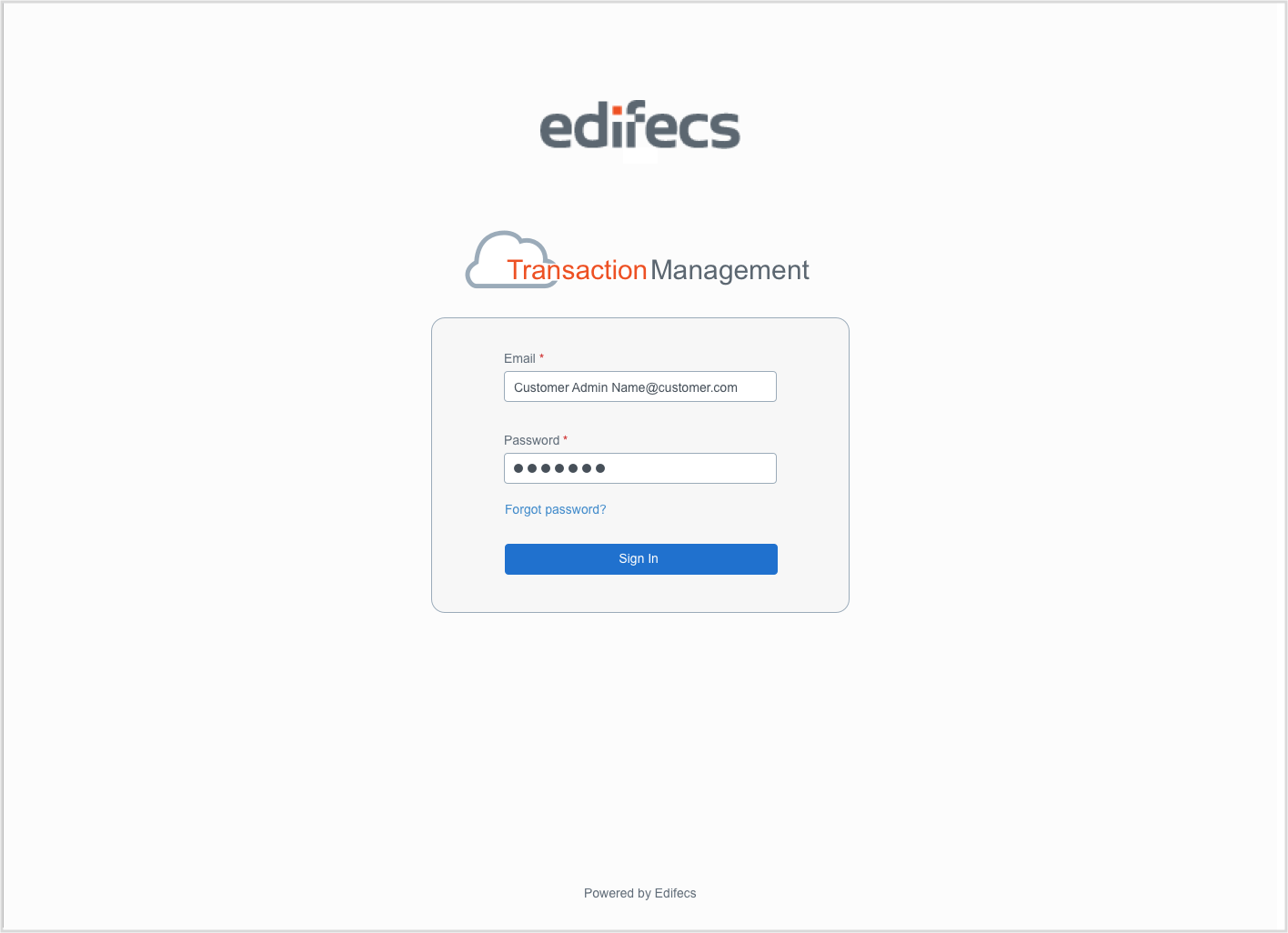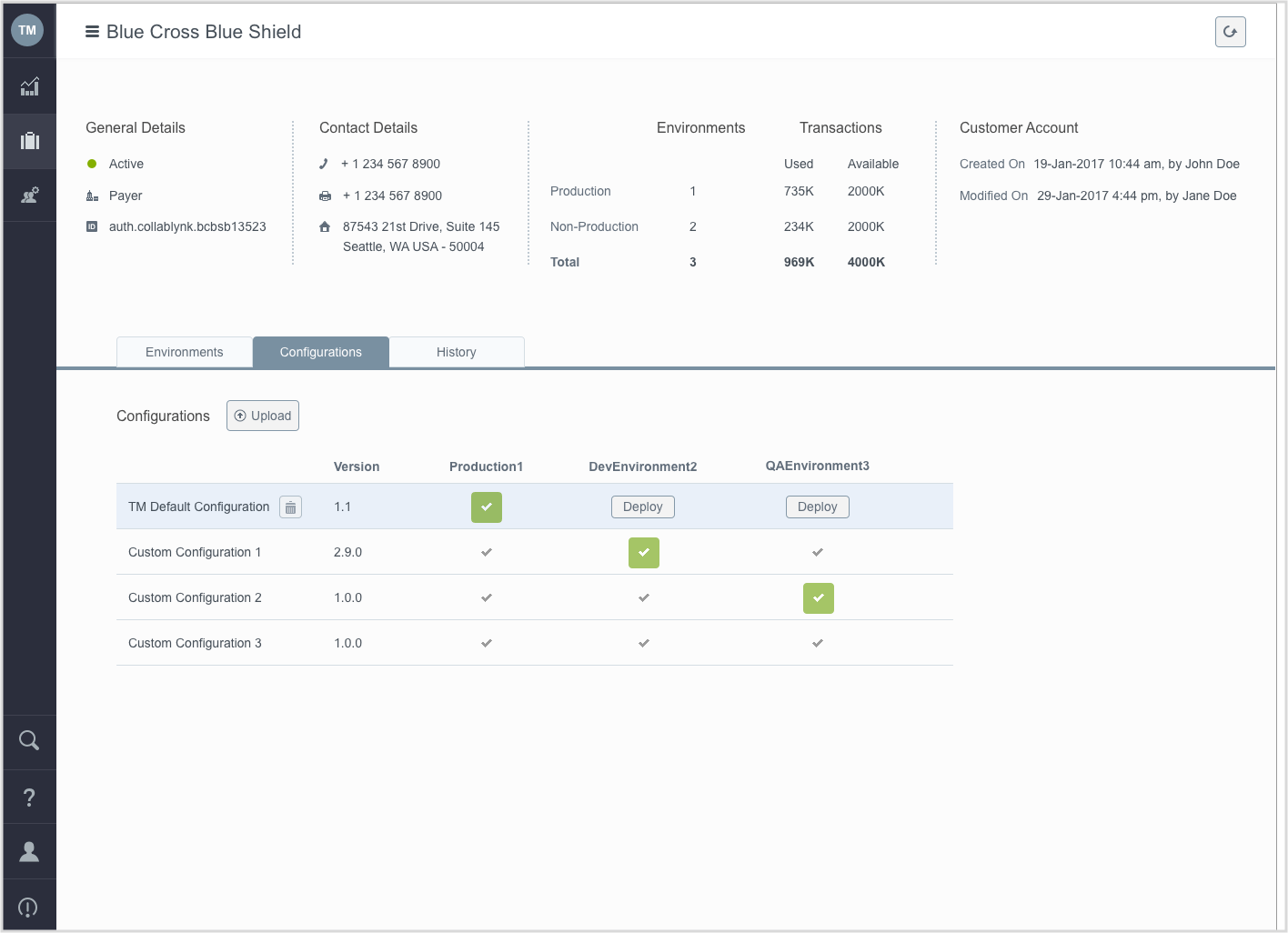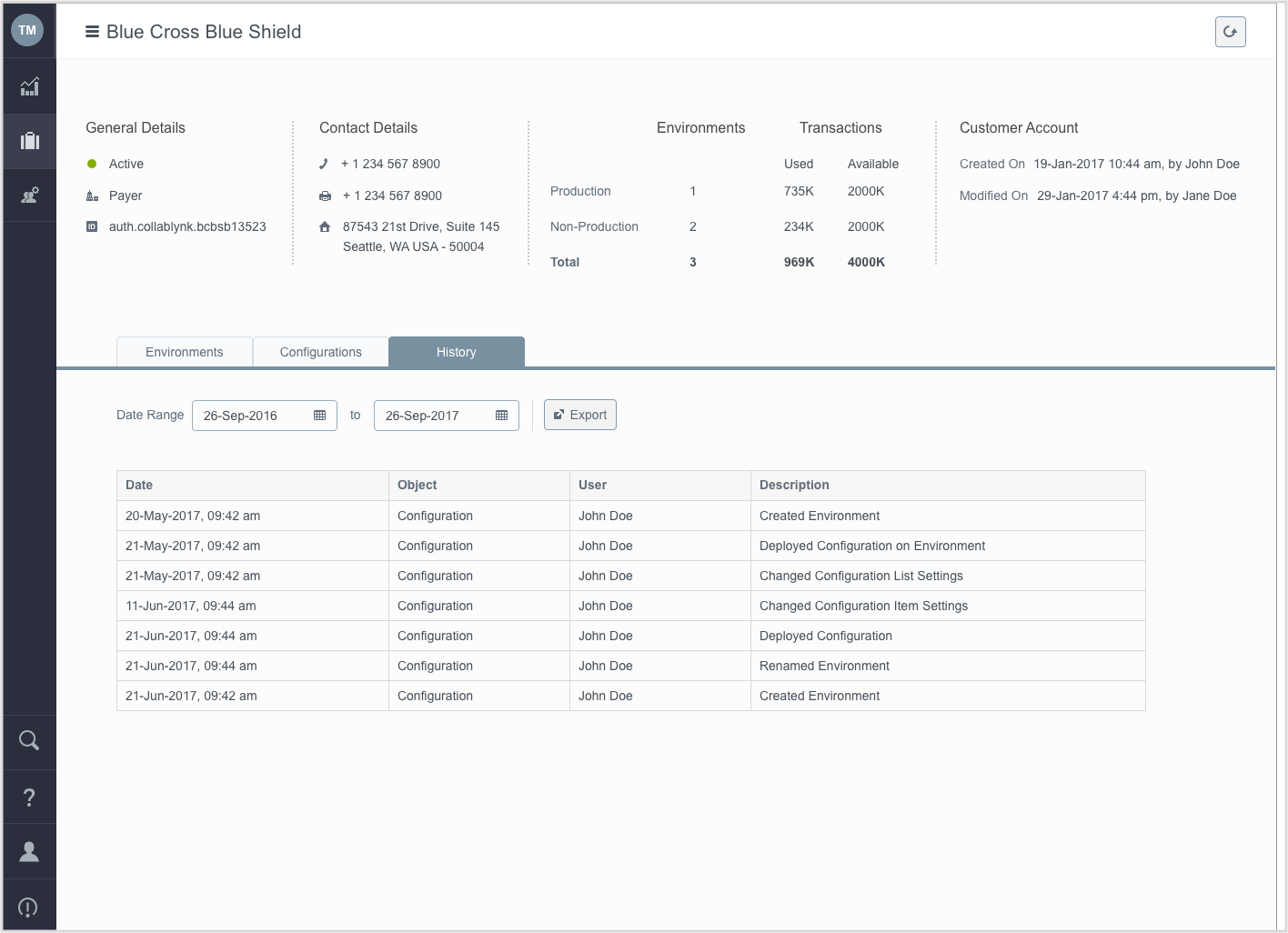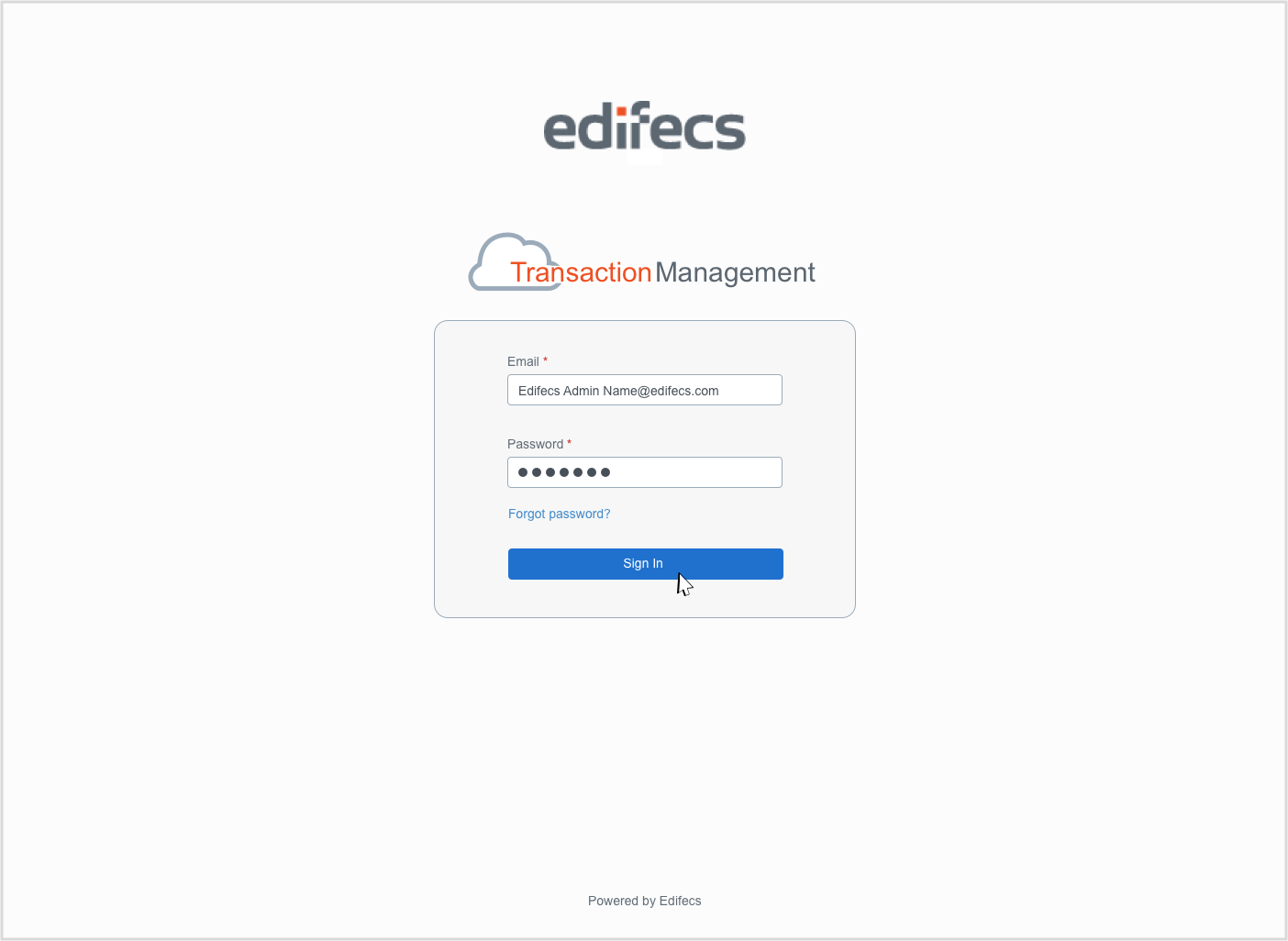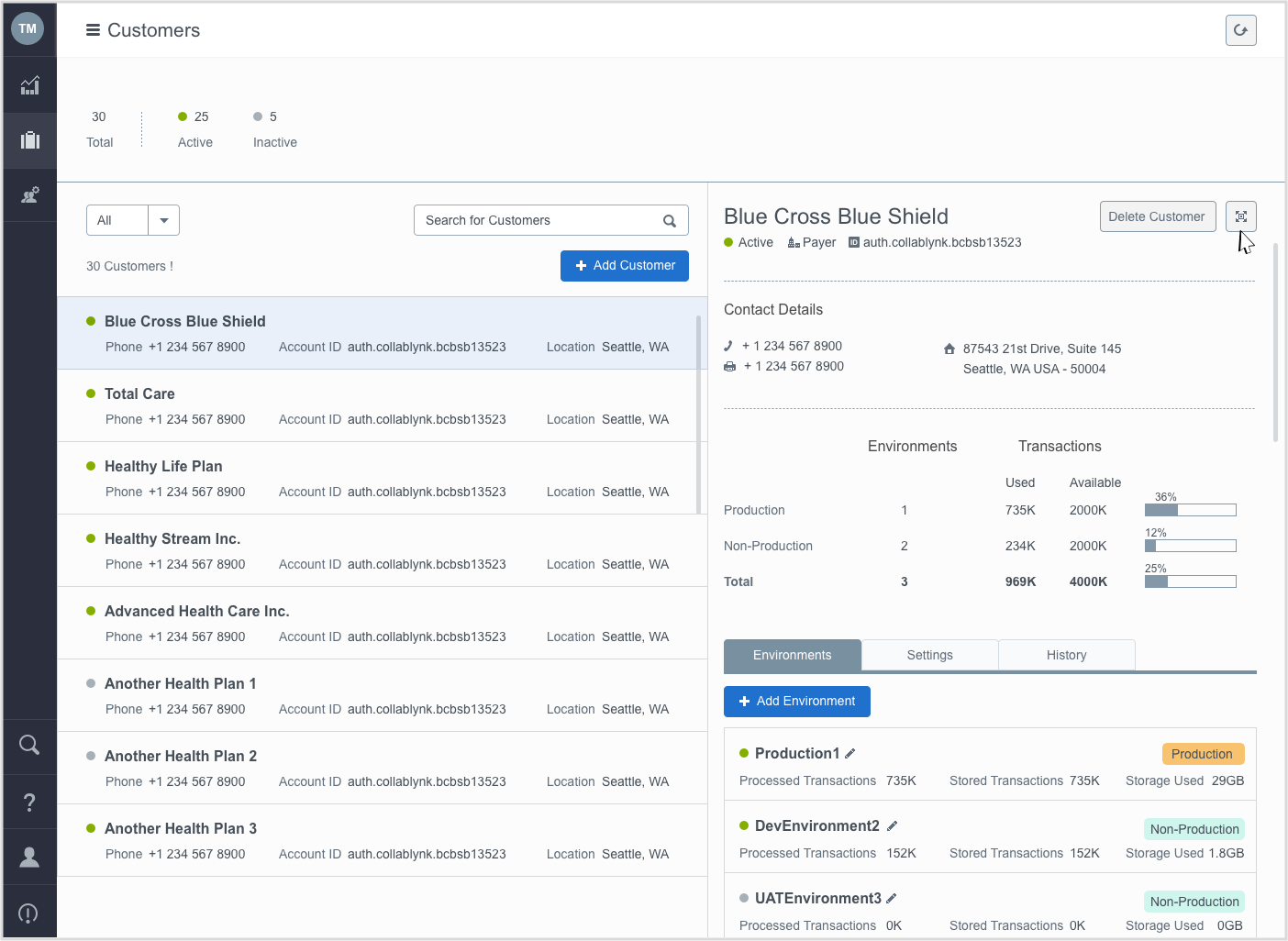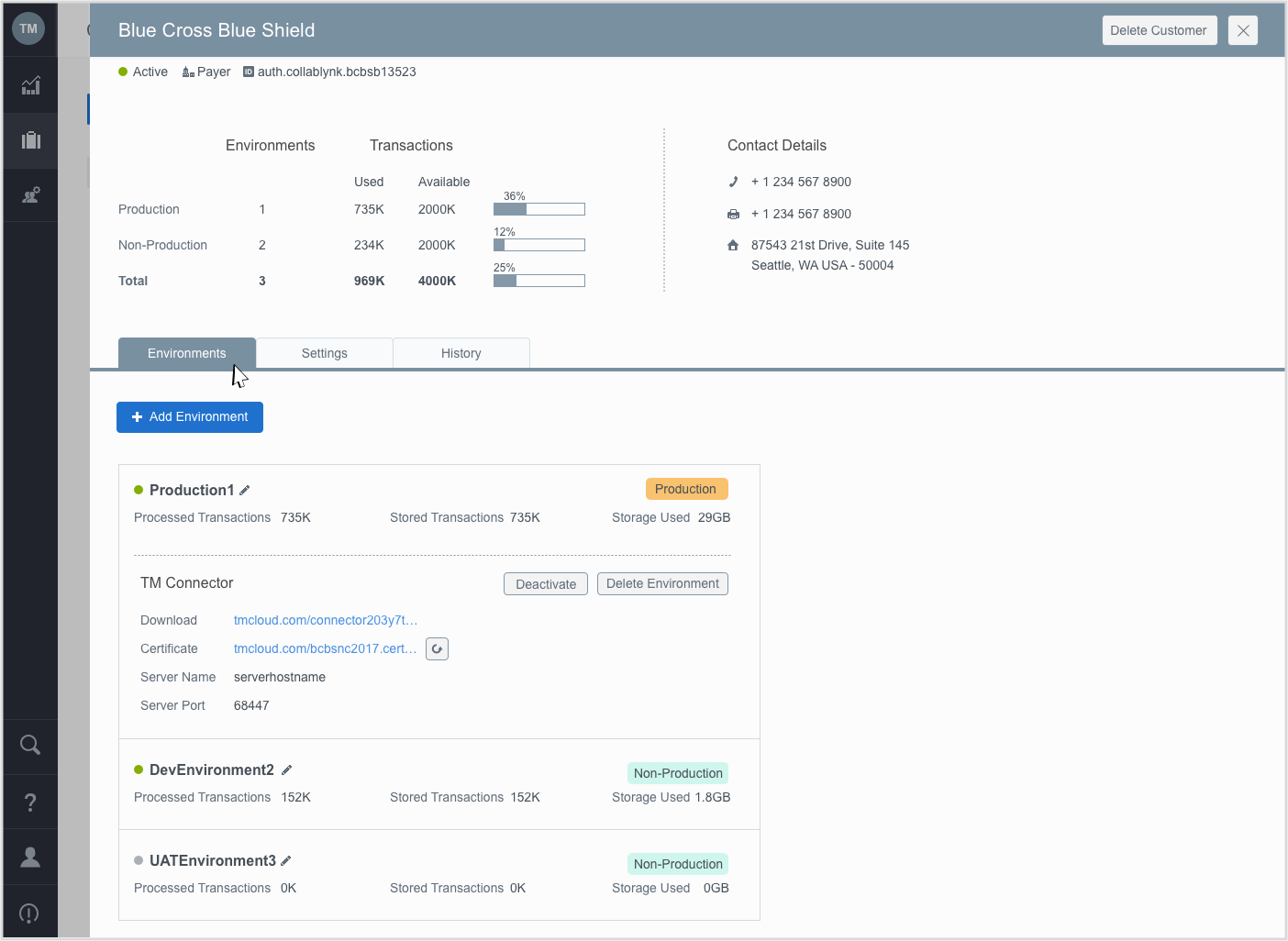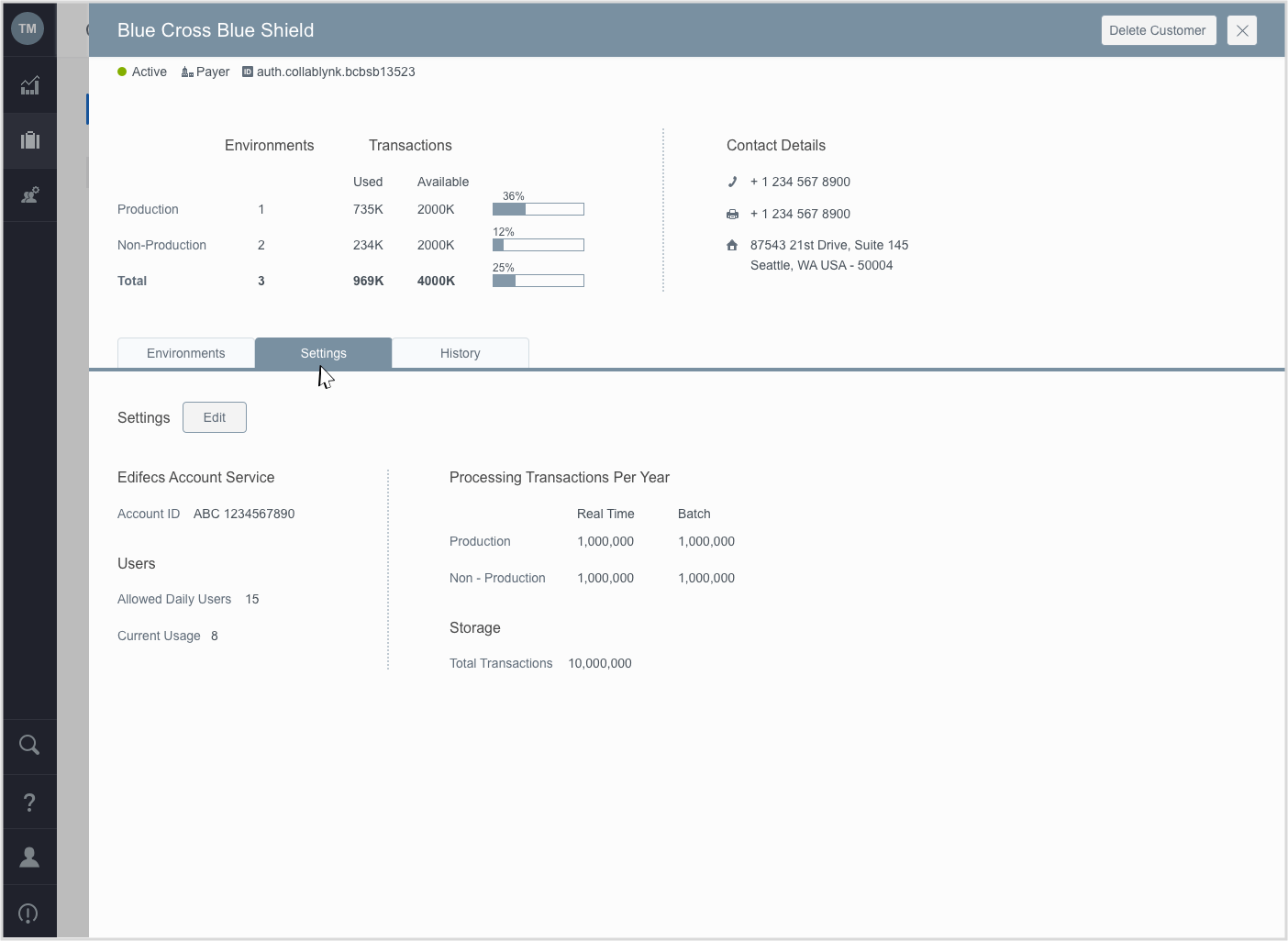To view all the professional projects, click here
TM Cloud enables the end-customer users to manage their profiles and the Edifecs users to manage customers internally.
A typical profile consists of the customer information, their configuration, transaction history, environments deployed, etc.
Transaction Management (TM) application consists of two parts: 1) TM Customer Cloud for End customers and 2) Edifecs Cloud for internal Edifecs users. It was a small project of 1 week each. For more info, click on the product details page here.
Transaction Management (TM) Customer Cloud enables the customer admin to edit / update their information and manage configuration settings. This project is a smaller feature design for the bigger TM cloud application. I worked as a Lead Designer for this project for 1 week. It started with understanding the requirements and discussion with the PM and Engineering team. Based on the inputs, I created lo-fidelity mockups to present different approaches of design. Finally, I created a hi-fidelity prototype to showcase how the actual application works. There were 3 rounds of iteration before it was handed-off for development.
Transaction Management (TM) Edifecs Cloud is for the internal Edifecs users to manage customers and their settings for the TM application. Through TM cloud, Edifecs users can add or delete a customer from the system. It allows them to create, deactivate and delete and an environment for the customers, set limits for the Transaction to be processed per year and view history of the account. I worked on this project for 1 week as a Lead Designer with the same team as that of TM Customer cloud.
Transaction Management was a short project assignment where I had to design the UI for 2 types of users for 2 weeks. I worked closely with the head of product to understand the requirements for each of the users and design a UI flow for them. The product analyst helped me with the data formatting. We involved the Engineering manager early in the design process to understand the technical constraints. The final output was the developed by the development team.


